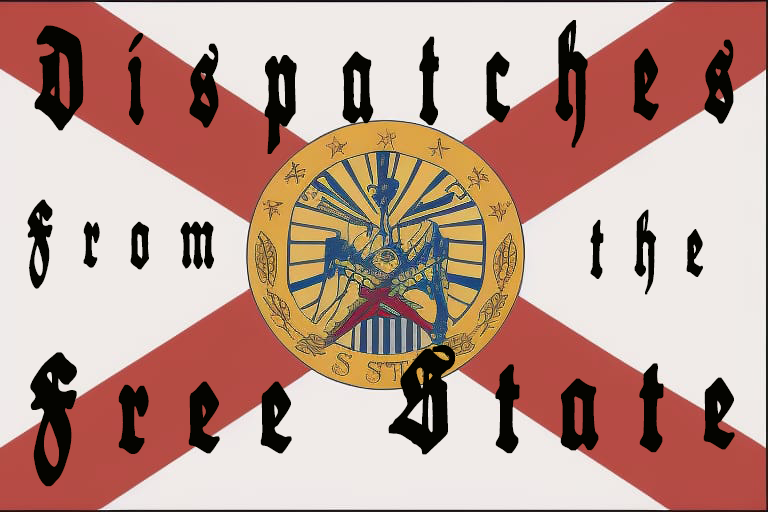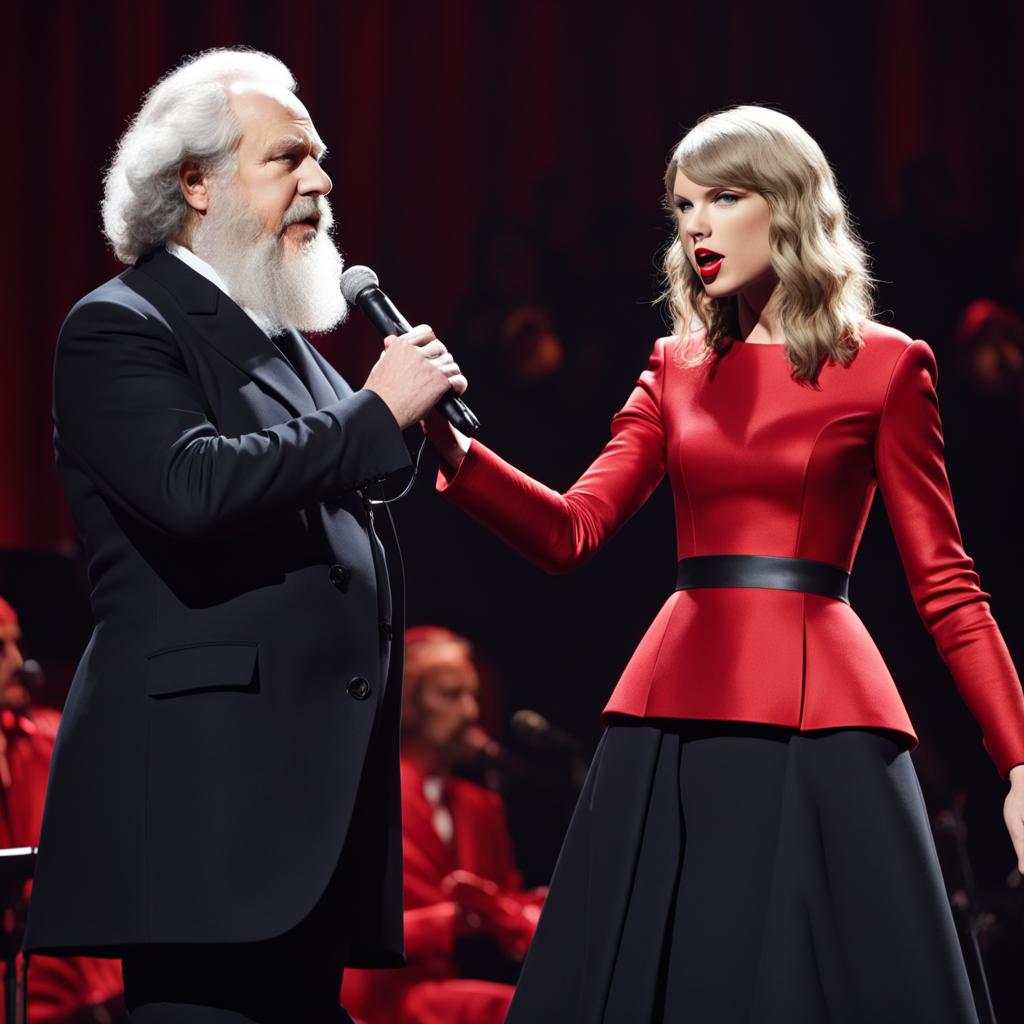THE 2016 PRIMARY IS BRINGING THE INTERNAL TENSIONS OF BOTH PARTIES INTO THE PUBLIC ARENA
…and this is a good thing!

The 2016 Primary Season is the most transformative and definitive primary in almost half a century. This is true for both parties as they struggle with their own, unique existential crises inherent in their particular coalitions. This process is especially revealing for the Republican Party.
Yet, the debates playing out in both parties are simply not analogous. The press really wants to see parity between the two, but that parity is simply not there. In the Democratic Part what are witnessing is a contest in which long simmering tensions between contradictory forces within the party’s coalition are finally being played out on the center stage. This is a democratic process that should be encouraged.
The Republicans, however, are involved in a very different contest. In this case, it is not a contest of ideas, but rather one of tactics, of approved rhetoric rather than one of substance.
It should come as no surprise that the Democratic contest has come down to an establishment champion and an icon of left liberalism who is not even a member of the party. For more than a generation the Democratic Party has been a disappointment to the left as it abandoned populist principles to cater to, perhaps even to survive against, a resurgent conservatism consolidating its forces within the Republican Party. Left liberals, like myself, have spent our lives wondering what it would take for the Democratic Party to pay attention to its traditional constituents. Many of us spent at least part of our lives having abandoned the Democratic Party in a vain effort to build a third-party more representative of our beliefs and goals.
The 1980s saw the last vestiges of the New Deal and Great Society Democrats of our fathers and grandfathers. Just as America’s oldest party was being transformed into a progressive/populist institution unencumbered by its segregationist wing, it seemed society was turning its back on seemingly destabilizing liberal reforms in favor of a more stable conservatism offering safety and a return to a twisted concept of American nationalist glory. This began with Democratic losses in the late sixties and early seventies and were legitimized by the election of Jimmy Carter, a combination of corporatist and pro-civil rights “moderate” Democrat. After the landslide election of Ronald Reagan, the power within the Democratic Party shifted toward the “Reagan Democrats” who later evolved into the Blue Dogs. In short, the Blue Dog Caucus was comprised of pro-corporate, free trade, anti-union, national security Democrats, little concerned with civil rights, but willing to preserve Social Security and Medicare.
The Blue Dog Democrats controlled the Democratic Party for most of my life, reaching their peak in the 1990’s. They are since defunct, but many Democrats are still beholden to the play-it-safe principles instilled by this group’s politics. The Clinton era pandering to the corporate elite, including turning his back on economic justice and populist movements still dominates the party. According to OpenSecrets.org, the Finance/Insurance/Real Estate sector has contributed over $16 million to the Democratic Party in 2016 while labor only accounts for $2.3 million. Even today, the Democratic Party remains the corporatist, militaristic party that also protects Social Security, Medicare and a woman’s right to choose, as opposed to the Republicans who ultimately want to do away with the last three.
Consequently, progressives have become increasingly disenchanted with the Democrats, often seeing the party as “no different from the Republicans.” This position may be indefensible in the details, but when it comes to challenging the power elite, neither party offers a platform. Consequently, those on the left, looking for a populist challenger to represent them, have long since given up on the Democratic Party as a real alternative. For the most part, the Party has shrugged off this fact. For at least the last fifteen years the Democratic Party establishment has demonstrated that they consider liberals a captive bloc. After all, the alternative is allowing increasingly reactionary right wingers to step into office. So you have no choice but to vote for the less objectionable, corporate approved candidate…Al Gore, John Kerry, Barack Obama, Hillary Clinton. And for many years, liberals mostly played along…at least during presidential elections. Liberals have been notably absent or unwilling to pull the lever for Democrats during midterm elections.
The left, however, is not dead in the Democratic Party. The Congressional Progressive Caucus was establishedIn 1991, in the dark ages of Democratic liberalism. Over the years, the CPC has been the voice of liberalism in the party. Recently, progressives have gained considerable status as the right has become demonstrably more reactionary. It’s no wonder why the same election that swept the Tea Party into Congress also annihilated the Blue Dogs, but left the CPC relatively unscathed. Thus the left has become resurgent, though we are tentative with this growing influence.
This resurgence is now being played out in the Democratic Primaries. Hillary Clinton represents the establishment wing of the Democratic Party–the same pro-choice corporate hawks who like Social Security and Medicare. Now, however, the establishment has a legitimate challenge from the left. Not a Dennis Kucinich challenge or even a Howard Dean challenge. Now we have a true representative of the left (even if the jury is still out on his self-described socialism) in Senator Bernie Sanders. Again, not a Democrat, but unifying the left back into the Democratic Party. Hillary and Bernie now spar over the role of the progressive agenda in the party. As it should be. Political parties are, after all, coalitions that come together due to their commonalities and in spite of their differences, to achieve mutually desirable goals. These coalitions were never meant to be permanent, and occasionally they need to be renegotiated. For years now the left wing of the coalition has not experienced any mutuality in their relationship with the Democrats. It’s time to renegotiate. That is a democratic process and is the process that the Democratic Party is going through, a negotiation between the establishment and the left as well as multicultural and women’s movements that the party must confront if it is to be viable. And, for progressives, this negotiation is bearing fruit.
Now this post has spent a great deal of time discussing the Democratic Party when the title refers to the Republicans. This was done out of necessity in terms of setting up a comparative. What we see in the Democratic Party is, more or less, a normal institutional renegotiation. This process has gone on many times before. The Populists coalition of farmer alliances and unions with Roman Catholics and Southern Segregationists in the 19th century, the New Deal coalition in the 1930’s, the rise of the Civil Rights Democrats and the New Left in the fifties and sixties and the Blue Dogs and third way Democrats in the late eighties and nineties cover only a hundred years of political shifts. The Progressive Caucus and the Bernie Sanders movement is only the latest iteration.
Now this process has happened in the Republican Party as well. Let’s face it, the GOP is no longer the Party of Lincoln. Nor should it be expected to be. The nascent Republican Party of the 1850’s, a coalition of politically orphaned Whigs, industrialists, abolitionists and yes, socialists, had to change in the face of Reconstruction, industrialization, imperial expansion, two world wars and a Great Depression. We see this renegotiation happening during the Progressive Era with the corporatist Republican establishment slacked jawed by the success of Teddy Roosevelt’s progressive arm of the party. This split played out during the election of 1912 when TR lost his nomination bid for the Republican ticket, but accepted the nomination of the Progressive Party (what became known as the Bull Moose Party). General Dwight Eisenhower and his primary opponent, Robert Taft personified the conflict between more liberal eastern Republicans and the more conservative base.
The most immediately pressing shift in the Republican Party, however, happened as a result of the growing influence of the Civil Rights platform in the Democratic Party. As African-Americans gained power within the Democratic Party, leading to the establishment of a civil rights platform in 1948 and the passage of the Civil Rights Act and the Voting Rights Act in Lyndon Johnson’s first term, disenchanted whites left the party in droves. They were welcomed with open arms by a Republican Party in transition, at first by Barry Goldwater, and later, more successfully, by Richard Nixon and his Southern Strategy.
The modern conservative movement was galvanized in the late seventies and early eighties under the leadership of Ronald Reagan. Reagan was catapulted into the White House by a coalition including the business elite, southern segregationists and the increasingly influential Christian Right. For the most part, this coalition has been the dominant force in American politics. It’s mission has been to protect the corporate elite and to promote “traditional values,” which are properly understood as white male Protestant values.
To do so, the Republican party has become increasingly conservative to the point where the party itself is identified with the conservative movement. This is not the historical norm for the Republicans. The party has pursued a largely successful strategy of divide and conquer and fear mongering. On the one hand, the party divides the working class by conjuring up the notion of a “Welfare Queen” who is able to live a life of leisure on the hard-earned money of working Americans who see an ever-increasing chunk of their wages taken by tax and spend liberals. Claims of reverse discrimination are leveled at ejaculating feminazis, black radicals and multiculturalists in their war against white people. All secular discourse is a war against Christianity by the secular atheists of the left.
On the other hand, Republicans never miss an opportunity to play on our very fears. Liberals are going to usher in a soviet style tyranny. Be afraid. Thugs are walking the streets ready to shoot you and rape your wife. Be afraid. The terrorists are going to get you. Be afraid. The secularists and socialists are brainwashing your kids in public school and university. Be afraid. It’s no longer safe to walk the streets. Russia! China! Iran! Be afraid. Be afraid! BE AFRAID!
…and put your faith in the Republican Party. The GOP is the only party that can protect you from the terrorists, the thugs and druggies, and those people who are out to do you harm, steal your freedoms, brainwash your kids and take your hard-earned money. After all, the Democrats are either perpetuating the problem or they are too smarmy and weak to protect you from the real threats against the country. This faith in the Republican Party is wrapped in the American flag and carrying a cross.
This strategy has been nuanced over the years into an art form. In both cases, divide and conquer and fear mongering, bigotry is the underlying theme. But bigotry is not a marketable concept. The N-word, the C-word or any other direct, bigoted epithet is subject to sanction in today’s America. The New Left was, at least, successful in that regard. Former Nixon campaign advisor admitted this very element of conservative strategy back in 1981.
You start out in 1954 by saying, “Nigger, nigger, nigger.” By 1968 you can’t say “nigger”—that hurts you, backfires. So you say stuff like, uh, forced busing, states’ rights, and all that stuff, and you’re getting so abstract. Now, you’re talking about cutting taxes, and all these things you’re talking about are totally economic things and a byproduct of them is, blacks get hurt worse than whites.… “We want to cut this,” is much more abstract than even the busing thing, uh, and a hell of a lot more abstract than “Nigger, nigger.”
After all. Ronald Reagan never said that his mythical “Welfare Queen” was black, and “strapping young bucks” could be white. Really! No racism here, folks. Any attempt to call conservatives racist is nothing more than liberal propaganda.
The same is true for conservative views on class. Corporate conservatives really see no problem with people starving to death, being denied basic care, education, poisoned by a contaminated environment. The people they really represent have all the resources necessary to satisfy their needs. Indeed, it could be said that they control ninety percent of the resources in the country, and they are not willing to share any of it. Back in 2012, when conservative hero Ron Paul was asked if a person who did not have insurance should be allowed to die, the audience interrupted his response by cheering and applauding this idea. Yet any attempt to point out the negative consequences of conservative policies on working people is inciting class warfare…ergo communism.
This strategy has been political gold for the last forty-five years. Working class whites, especially white males have been induced to vote against their class interests having been motivated by their irrational fears of those people, namely liberals, people of color, feminists, non-christians. For the Republican establishment, preserving the perceived legitimacy of this strategy is the primary concern. Literally. The 2016 Republican Primaries have pulled back the curtains on this fruitful tactic, leaving the establishment to pull desperately at the tapestries in order to hide party secrets.
If the Republican primaries were analogous to the debate going on in the Democratic Party they would look different. Most likely we would see a conflict between the corporate conservative establishment and the more visceral, culture war base. That’s really not what we see. In this context, the corporate elite of the conservative movement really don’t care about culture war issues, abortion, prayer in schools, marriage equality. They care only about tax cuts, without sacrificing government subsidies and de-regulation. They want small government for the Demos, but big government protections for the elite.
For the most part, all of the contestants who are or have been in the 2016 primary have paid the requisite homage to these goals. There’s no discrepancy here.
Another possible contest may exist between secular, libertarian conservatives and the Christian Right. Perhaps this plays a role between the two leaders, Ted Cruz representing the Evangelical wing while Trump pulls at the more secular. But this really doesn’t seem to be the major theme.
The fact is, the elite can’t afford to alienate either the xenophobic white base, or the Christian Right base. Corporatist policies are unpopular. Without the cover of small government libertarianism and the Protestant ethic, thereis very little support for the conservative movement. Appealing to the persecution mentalities of the white working and middle class and Christians is the only cover the corporatists have. At the same time, the party is obliged to give cover to bigots and zealots in order to make them look more rational, and less bigoted and zealous.
If Trump and Cruz would play by the standard rhetorical rules, all would be well in conservativeland. But they are not. That is why they are wildly unpopular with the party. It’s not because of their own bigotry, zealotry, xenophobia and megalomania. Those things have never been a problem to the GOP establishment. Historically, conservatives have been able to couch such beliefs in “states rights; real America; a shining city on a hill; morning in America; a thousand points of light; compassionate conservatism,” and all was right with the conservative world.
No longer. The Republican Party is, and has been, the party of Trump and Cruz. Both of whom are obviously and categorically awful. Both of whom are hated by the Republican establishment not because of their policies, but because they are obviously and categorically awful, revealing the conservative movement and the Republican Party for what it is–obviously and categorically awful. It’s not about the substance of the their policies. It’s about the packaging and marketing to so-called independent voters who may be unwilling to vote for a “moderate seeming” conservative over a socialist, over Hillary Clinton because…you know, Hillary. They will not, however, be willing to support Trump or Cruz. After all, the center are not typically bigots and zealots and have no interest in bigotry and zealotry. In fact, such things scare them off.
That’s the real threat posed by Trump and Cruz. They shine spotlights that which the establishment would rather keep in the shadows. But the base is looking for an honest conservative who speaks his mind and calls it as he sees it. They don’t want the compassionate conservative or the thousand points of light. They want the bigot and the zealot who will protect them from those people.
So now the only thing the GOP can do to stop the odious Trump is to support the equally odious Cruz with the hope of having a pretext for brokering the convention. This strategy will be a disaster, but then…






Leave a comment